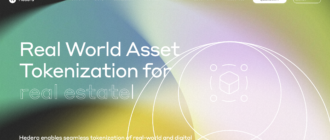XRP is a digital currency designed to complement traditional payment methods by expediting international transactions and reducing associated costs. Developed by Ripple Labs, it aims to transform the banking sector by connecting banks, payment providers, and digital asset exchanges through the RippleNet to provide a seamless experience for money transfers worldwide.

History of the Project
XRP was conceived by Ryan Fugger in 2004 as Ripplepay, a precursor to the XRP Ledger. In 2012, Jed McCaleb and Chris Larsen took over the project and rebranded it as Ripple, laying the foundation for the XRP Ledger. Ripple Labs was formed to develop the protocol further and support the infrastructure necessary for its operation. Significant milestones include partnerships with major banks and financial services, which helped Ripple grow despite various legal and regulatory challenges it has faced over the years.
What is XRP
XRP serves as a bridge currency in RippleNet to facilitate quick conversion between different currencies. It operates on a decentralized blockchain technology that significantly reduces the time and cost of cross-border transactions. XRP is designed to solve a fundamental problem of slow and expensive international transfers prevalent in the traditional SWIFT system, offering a more efficient alternative for global remittances and payments.
How the XRP Project Works?
XRP is based on a unique set of technologies designed to streamline global financial transactions. Unlike many cryptocurrencies, it does not use Proof of Work (PoW) or Proof of Stake (PoS); instead, it operates on a consensus mechanism known as the Ripple Protocol Consensus Algorithm (RPCA).
The XRP Ledger
At the core of XRP’s functionality is the XRP Ledger, a decentralized cryptographic ledger powered by a network of peer-to-peer servers. The ledger is maintained by independent participants of a global “XRP Community,” which includes financial institutions and individual validators. What sets the XRP Ledger apart from other blockchain systems is its ability to process transactions every 3-5 seconds, thanks to the efficient nature of the RPCA.
Ripple Protocol Consensus Algorithm (RPCA)
The RPCA is fundamentally different from the consensus mechanisms used in Bitcoin or Ethereum. Instead of competing to solve complex mathematical problems (as in PoW) or staking coins for the right to validate transactions (as in PoS), XRP’s validators work together to agree on the order of transactions. Each server maintains a unique node list (UNL), which is a set of other trusted nodes that it agrees to listen to. A transaction is considered valid if a supermajority (typically 80% or more) of a server’s UNL agrees on the outcome.
This consensus process allows the network to secure itself against double-spending and other financial frauds without the significant energy costs associated with PoW. The rapid consensus times also mean that transactions can be confirmed quickly, making XRP suitable for high-speed, international money transfers.
Smart Contract Capabilities
The XRP Ledger also supports smart contract functionalities through integrated tools like the RippleX platform, which provides developers with libraries to integrate blockchain technology into applications. While XRP’s smart contract capabilities are not as extensive or complex as Ethereum’s, they are designed to be highly efficient and scalable, tailored specifically for financial services and institutional use.
Distinctive Features and Technological Advancements
One of the distinguishing features of XRP is its limited token supply, where all 100 billion XRP tokens were pre-mined at inception. This setup eliminates the need for mining-related incentives, reducing the environmental impact associated with other cryptocurrencies. Additionally, XRP can be used as a bridge currency in transactions involving different fiat currencies, improving liquidity and reducing exchange costs.
In summary, XRP leverages the RPCA and a high-performance ledger technology to provide fast, reliable, and energy-efficient transaction solutions. Its consensus model and the strategic focus on reducing the friction in global payments position it distinctly within the cryptocurrency space, making it an attractive tool for financial institutions looking to modernize their transaction infrastructures.
What is RippleNet?
RippleNet is a decentralized global network of banks and payment providers that utilize Ripple’s advanced blockchain technology to facilitate real-time, cross-border payments with transparency and low costs. As the backbone of Ripple’s financial transaction services, RippleNet is designed to seamlessly connect various financial entities through a unified interface that supports direct transacting without the need for intermediaries typically involved in international finance.
Core Features of RippleNet
- Instantaneous Transactions: RippleNet reduces the transaction time from days, which is common with traditional banking systems, to mere seconds. This is achieved through Ripple’s advanced blockchain technology which ensures quick and direct transfers between parties.
- Low Transaction Costs: By optimizing the transaction flow, RippleNet substantially lowers the costs associated with cross-border payments. This is particularly beneficial for banks and payment providers who handle a high volume of international transactions, allowing them to offer cheaper services to their customers.
- Standardized Technology: RippleNet provides a standardized technology stack that all network members use. This standardization facilitates easy integration and consistent performance across different financial institutions, ensuring a smooth user experience irrespective of geographical boundaries.
- Scalability: Designed to handle a large volume of transactions simultaneously, RippleNet’s infrastructure supports the growing demand for efficient and quick international payments. Its scalability makes it an ideal solution for financial institutions looking to expand their global reach.
- Security and Compliance: RippleNet adheres to strict security protocols and supports compliance with various international regulations, providing a secure environment for transacting. The network also uses advanced encryption and blockchain immutability to safeguard transaction data.
- Interoperability: RippleNet promotes interoperability between diverse financial networks. It allows for fluid communication and transfer capabilities across various traditional and blockchain-based infrastructures. This interoperability is crucial for creating a truly inclusive financial system.
RippleNet’s Role in Financial Transactions
RippleNet plays a pivotal role in modernizing how money is transferred globally. It acts as a bridge between different currencies, ensuring that funds are quickly converted and delivered in the recipient’s local currency via Ripple’s digital asset, XRP, if necessary. This use of XRP as a bridge asset minimizes liquidity costs and enhances transaction efficiency.
Furthermore, RippleNet’s On-Demand Liquidity (ODL) service uses XRP to fund cross-border transactions in real time, eliminating the need for financial institutions to pre-fund accounts in destination currencies. This dramatically frees up capital and reduces the operational costs associated with global payments.
Tokenomics of XRP: Understanding Its Role and Value
XRP is a digital asset native to the XRP Ledger and is classified as a cryptocurrency coin rather than a token. This classification is due to XRP being the fundamental asset of an independent blockchain, rather than being issued on top of another blockchain like Ethereum-based tokens.
Coin Supply and Issuance Model
XRP has a unique issuance model where all of the 100 billion XRP coins were pre-mined at inception. This is distinct from cryptocurrencies like Bitcoin, where coins are mined as rewards for validators. Ripple Labs initially created the XRP Ledger and distributed XRP with a significant portion allocated to themselves—around 60% of the total supply. To manage potential market risks associated with this large holding, Ripple placed approximately 55 billion XRP in a series of escrows. These escrows release up to 1 billion XRP monthly, intended to be used or sold to fund Ripple’s operations, invest in startups, and build the XRP ecosystem.
Market Dynamics and Price Factors
The price of XRP, like other cryptocurrencies, is influenced by a variety of factors including market demand, macroeconomic indicators, technological advancements within the Ripple network, and regulatory news affecting Ripple and the broader crypto market. XRP’s price has experienced significant volatility, peaking during the cryptocurrency bull runs and retracting during market downturns or in response to adverse regulatory decisions.
Role of XRP within RippleNet
Within RippleNet, XRP serves a crucial role as a bridge currency that enables quick liquidity in cross-border transactions. This utility is central to RippleNet’s On-Demand Liquidity (ODL) service, which allows financial institutions to transact in different currencies across the globe without pre-funding destination accounts. This not only speeds up transactions but also reduces the capital requirements and fees associated with maintaining balances in multiple currencies.
XRP’s Utility Beyond RippleNet
Beyond serving as a bridge for international payments, XRP also provides transactional utility within the XRP Ledger for a range of operations including but not limited to transaction fees and a minimal reserve required to initialize new accounts on the network. This usage helps prevent spam transactions and secures the network’s operational integrity.
The tokenomics of XRP are characterized by its fixed supply, pivotal role in liquidity provision, and the strategic release of funds from escrow accounts managed by Ripple. These factors together provide XRP with both stability and utility in the cryptocurrency landscape. As Ripple continues to expand its partnerships and services, the demand and, consequently, the value of XRP is influenced by its practical applications and the broader acceptance of RippleNet’s offerings in the global financial market.
Where to Buy XRP?
Purchasing XRP is straightforward, thanks to its availability on several of the top cryptocurrency exchanges. Here are prominent platforms where you can buy XRP:
- Binance: Offers extensive trading pairs for XRP, including against major cryptocurrencies and fiat currencies. Binance is known for its deep liquidity, which means you can execute large orders without significantly impacting the price.
- HTX (formerly Huobi): This exchange provides a secure platform with a user-friendly interface for buying and trading XRP. HTX also supports various utilities such as futures and margin trading of XRP.
- MEXC: Known for its range of altcoins including XRP, MEXC provides options for spot and futures trading. Their platform is designed for both beginners and advanced traders.
- Bybit: Although primarily known for derivatives, Bybit also offers spot trading in XRP. It’s a good choice for those looking to trade XRP within a comprehensive and robust trading environment.
- KuCoin: This exchange allows users to trade XRP against a variety of digital currencies. KuCoin is celebrated for its user-friendly interface and community-driven approach.
- Bitfinex: Offers advanced trading features for XRP, including spot trading and margin trading with leverage. Bitfinex caters to professional traders looking for high liquidity.
Where to Store XRP?
Storing XRP safely is critical to protect against theft or loss. Here are several reliable options for storing XRP:
- Ledger Nano S/X: These hardware wallets offer robust security by storing your XRP offline, making them immune to online hacking attempts. Both models support XRP, but the Nano X also features Bluetooth connectivity for mobile device management.
- Trezor Model T: Another secure hardware wallet that supports multiple cryptocurrencies including XRP. It features a touchscreen, providing an easy interface for managing transactions.
- Exodus: A software wallet that provides an easy-to-use interface and the ability to exchange XRP within the wallet itself. Exodus is available on desktop and mobile platforms, offering flexibility in managing your XRP.
- Toast Wallet: Previously one of the most popular XRP-specific wallets, it was a free and open-source wallet designed specifically for XRP. Although it’s discontinued, it’s important to mention for historical context. Users need to look for alternative wallets offering similar features.
- XUMM: A mobile wallet developed specifically for the XRP Ledger, offering functionalities beyond simple transactions, such as interacting with XRP Ledger’s decentralized exchange and other financial instruments.
When choosing a storage solution for XRP, consider the type of wallet based on your security needs, ease of use, and the features offered. Hardware wallets are generally recommended for higher security, especially for storing large amounts of XRP, whereas software wallets can provide convenience for everyday transactions and trading.
Future Prospects and Development Forecast of XRP
The growth and future prospects of XRP are intricately tied to its adoption by financial institutions and its regulatory landscape. Here’s a detailed overview of the factors that will likely influence XRP’s growth trajectory:
Adoption by Financial Institutions
XRP’s potential for growth is significantly bolstered by its adoption among banks, payment providers, and financial services. Its ability to facilitate fast, cost-effective international money transfers makes it an attractive option for financial institutions aiming to improve their transaction efficiency. Major clients and partners include:
- Santander: One of the first major banks to adopt RippleNet, utilizing it for cross-border payments.
- American Express: Joined RippleNet to enhance the speed and transparency of international transactions.
- PNC Bank: Utilizes RippleNet to process international payments for its customers rapidly.
- MoneyGram: This partnership leverages Ripple’s technology for quick and low-cost cross-border settlements.
Regulatory Environment
The regulatory environment significantly impacts XRP’s development. Positive regulatory developments, particularly in key markets like the United States, could greatly enhance XRP’s adoption rates and market penetration. Conversely, adverse regulatory actions could impede its growth.
Technological Advancements
Continued technological advancements within the Ripple ecosystem, such as enhancements to RippleNet and the introduction of new functionalities to the XRP Ledger, are expected to drive further adoption and utility of XRP. Innovations focusing on scalability and security will likely attract more institutional users to the platform.
Ecosystem of XRP
The XRP ecosystem comprises a range of services and platforms that interact with or build upon the XRP Ledger:
- RippleX: Provides tools and programs for developers to integrate blockchain technology into their applications, fostering the growth of the financial technology sector.
- On-Demand Liquidity (ODL): Uses XRP to fund real-time cross-border money transfers, reducing reliance on pre-funded accounts.
- Ripple Swell: An annual conference that gathers global financial services companies and blockchain enthusiasts to discuss innovations and future applications of blockchain technology.
Development Forecast
Looking ahead, XRP is positioned to potentially become a cornerstone technology in global finance, especially in facilitating payments and remittances across borders. As more financial institutions seek to reduce the costs and inefficiencies associated with traditional banking systems, XRP’s adoption could increase, leading to a broader role in the financial ecosystem.
The success of XRP will hinge on strategic partnerships within the financial sector, favorable regulations, and technological advances that continue to enhance its appeal to institutional users. The ongoing expansion of the XRP ecosystem, especially through initiatives like RippleX and ODL, will play a crucial role in its growth and utility in the coming years.
Conclusion
XRP stands out due to its unique technological solutions designed to overhaul traditional financial transactions. Its success hinges on broader industry acceptance and navigating complex regulatory environments. For advanced users and investors, understanding XRP’s technological and strategic potential is essential for evaluating its long-term viability and investment potential in the ever-evolving cryptocurrency space.






